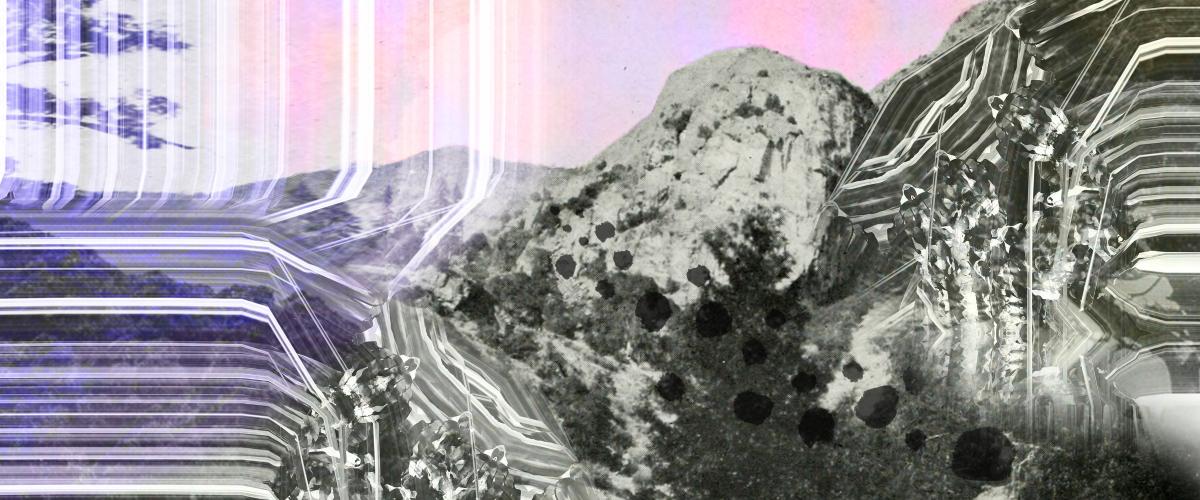In my poem, “Essay on Granite” for the North American Review, I’m working with the sonnet and with traditional meter as my grounding forces - end states the poem seems to choose. Perhaps there is some sort of subconscious attraction to a particular form that can't be put into words, sound and sense and emotions gravitating toward a particular mode of expression that intuitively feels right. The work started out as a much longer piece and the pressures of the language, and the pull of the suicide within, drew the shape towards the final sonnet-like form with a variety of metrical variations, perhaps too many. My choices strained, in ways that appeal to me, the poem's relationship with the form and rhythm.
The choices I am making while writing the poem, most of which I am not consciously aware of (some of which no doubt have to do with my ear for language, the lexicon I have access to at that particular moment, what I think I would like to say flowing into what I am actually saying) guides me to what looks like, in hindsight, a route. I think this sense of the poem driving shape and line rather than force-fitting poems into given meters and forms was something I learned from my former professor, Donald Justice, and his teachings about prosody.
In Compendium, a collection of Justice’s thoughts on prosody that I edited with Alan Soldofsky, Justice selects examples of types of prosody that highlight the effects of how choices of meter and pattern in a poem work together to heighten the overall aesthetic experience. How can the syntax and sound imply feelings of height and vertigo? Of oneness and breadth? Of sublimity in argument with suicide.
In my process I compare the discovery of linking up revision to emergent, given forms and meters to learning to climb. Sometimes an ascent looks impossible, the more experience with climbing the more pathways and finally the right path for me and my body, its shape and weight and height and dexterity and strength, appears. Compendium contains a historical record of patterns where form and sound merge.
Every year for the past 5 years, I have used the contents of Compendium to teach an Online Course on “Prosody & Revision” to benefit Omnidawn Publishing. We will be holding the workshop again in 2019. We will meet Sunday morning’s from April 14-June 2, 2019, between 10 a.m. and 12 p.m. EST via a phone conference line. Our participants join us from across the world. Every Sunday morning we also have a guest. Some of the guests for 2019 include Robert Hass, Donald Revell, Annie Finch, Tyrone Williams and many more.
For “Essay on Granite,” I was also inspired by Justice’s selection of a few lines from Wallace Stevens’ “Sunday Morning” in the “Accentual-Syllabics” chapter. The Stevens’ lines:
All pleasures and all pains, remembering
The bough of summer and the winter branch.
These are the measures destined for the soul
The “and” in the first of these lines is stressed and holds the same metrical fulcrum as the first syllable of “destined” in the last. This excerpt inspired the theme and the use of sound in “Essay on Granite.”
And so, also from Justice’s excerpts, I think the Yvor Winters’ quote from In Defense of Reason, applies, “...so the traditional meters, owing to their very subtle adjustability and suggestibility, are frequently very complex in their effect.”
Thinking about these learnings when working on "Essay on Granite," the focal images and ideas emerged. The pressures and congregations and forces of the poem’s concerns with granite seemed to sync up. I felt the compression of things made of granite. The first three lines shared my sense of feeling of things both as many and as one. The immutability, the beauty of Yosemite as the landscape, and the choice/presence of suicide coincided with the choices of line, meter, and form.
It was this exploration of the substance of experience being something hard and smooth and seemingly seamless that drove the closure of the poem - granite’s oneness. Oneness composed of an amalgam of other geological materials, oneness that time finds malleable. The self in the world will be broken and destroyed if the person in the body does not find a way to change but not change so much as to be eroded entirely.
I’ve been reading a few writers who tackle this deconstruction of the binary in a wide array of ways - the “and” and the “and”. These writers do so in ways that I don’t and can’t - and yet I feel affection and a connection to their work. I see in these writers what Robert Duncan in Bending the Bow called polysemousness. I hold immeasurable admiration for Myung Mi Kim’s Penury, Diana Khoi Nguyen’s Ghost of, Joseph Rios’s Shadowboxing, Tyrone Williams’ As iZ, Donald Revell’s The English Boat, Norma Cole’s Fate News, Julie Carr’s Real Life : An Installation.
Lessons in sound and form for me - live within the body of the writer in the world - we face artistic and personal challenges and the only way through these to the world is both to follow the path cut in the granite and to, when required, to skillfully climb the face of the seemingly un-ascendable face of beauty. At risk of our own death - or life.



